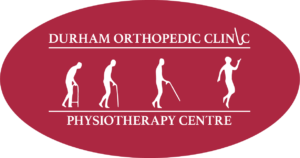In the realm of healthcare and wellness, massage therapy stands out as a versatile and powerful tool, offering benefits beyond relaxation and stress relief. One area where massage truly shines is in rehabilitation. Whether recovering from surgery, injury, or managing a chronic condition, massage therapy plays a vital role in the healing journey.
Understanding Rehabilitation:
Rehabilitation is a comprehensive process aimed at restoring an individual’s physical, mental, and emotional well-being after injury, surgery, or illness. It involves a combination of medical treatments, exercise routines, and therapeutic interventions to regain optimal function and quality of life. Among these interventions, massage therapy has emerged as a valuable and complementary approach.
Massage as a Complementary Rehabilitation Tool:
1. Pain Management:
One of the primary challenges in rehabilitation is managing pain. Massage therapy, with its focus on manipulating soft tissues, has proven effective in alleviating pain associated with muscle tension, inflammation, and scar tissue. By enhancing blood circulation and promoting the release of endorphins, massages provide a natural and non-invasive method for pain relief.
2. Improved Range of Motion:
Restricted movement often accompanies injuries and surgeries. Massage techniques, such as stretching and joint mobilization, aid in restoring flexibility and improving range of motion. Therapists work to break down adhesions and release muscle tightness, allowing clients to regain functional movement gradually.
3. Reduced Swelling and Inflammation:
Swelling and inflammation are common challenges during the rehabilitation process. Massage helps to stimulate the lymphatic system, promoting the drainage of excess fluids and reducing swelling. This can be particularly beneficial for post-surgery recovery or injuries involving soft tissue trauma.
4. Scar Tissue Management:
Surgical procedures often result in the formation of scar tissue which can impact tissue flexibility and function. Massage techniques, such as myofascial release, focus on breaking down scar tissue and promoting healthy tissue regeneration, aiding in the restoration of normal tissue function.
5. Enhanced Mind-Body Connection:
Rehabilitation is not only about physical healing but also addressing the mental and emotional aspects of recovery. Massage therapy provides a holistic approach by promoting relaxation, reducing stress, and fostering a positive mind-body connection. This emotional well-being contributes significantly to the overall rehabilitation process.
Collaborative Care:
Successful rehabilitation often involves a multidisciplinary approach. Collaborating with healthcare professionals, including physical therapists, physicians, and rehabilitation specialists, ensures that massage therapy is integrated seamlessly into the overall treatment plan. Open communication and a shared understanding of the client’s goals and progress are key to achieving optimal results.
Conclusion:
In the world of rehabilitation, massage therapy emerges as a supportive and effective modality, offering a range of benefits that contribute to the healing process. As individuals embark on their journey toward recovery, incorporating massage into their rehabilitation plan can lead to improved pain management, enhanced flexibility, and a more holistic approach to overall well-being. Through the skilled hands of massage therapists, clients can experience not only physical relief but also a renewed sense of connection between mind and body, paving the way for a healthier, more vibrant life post-rehabilitation.
If you are in pain and are looking to see a registered massage therapist or a physiotherapist contact the professionals at the Durham Orthopedic & Sports Injury Clinic at 905-428-7800 and start your road to recovery today.


